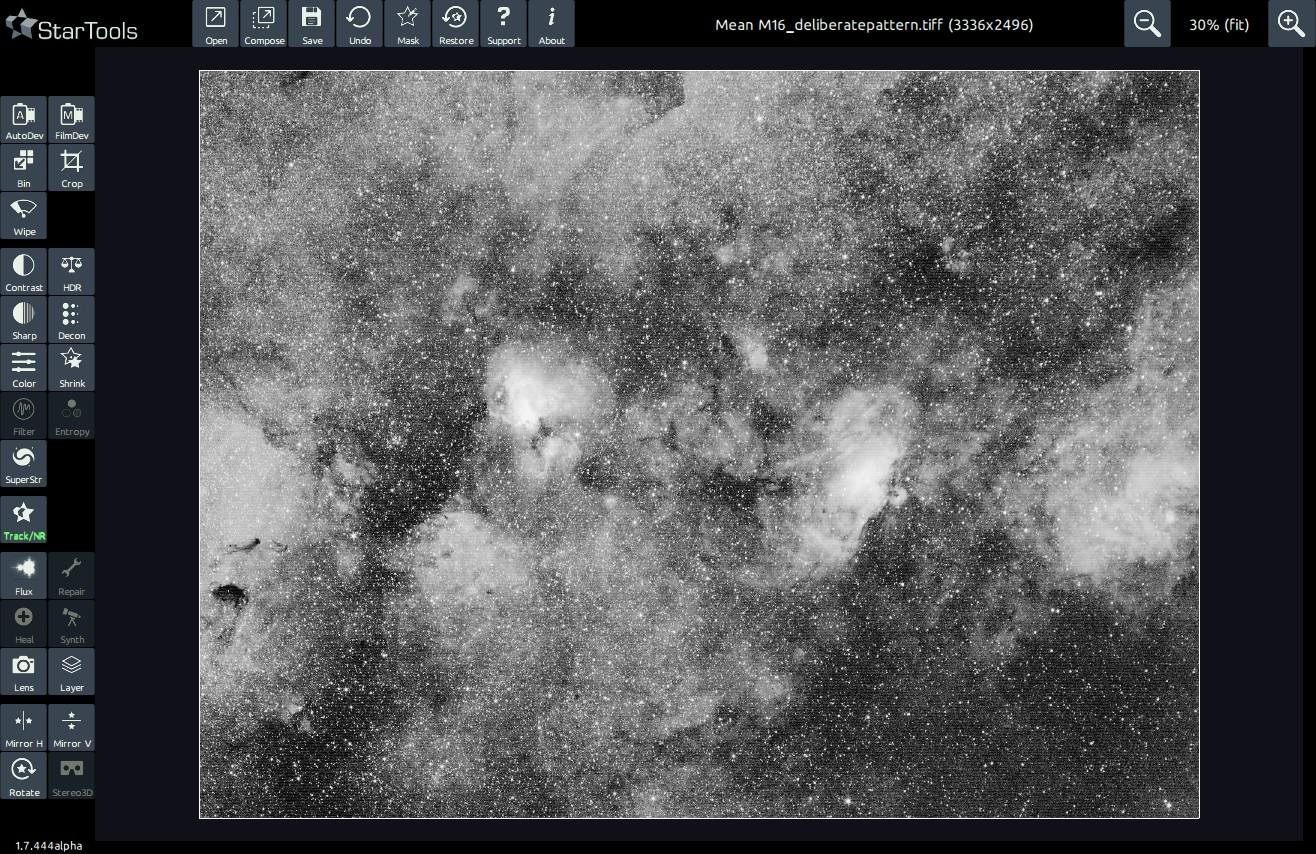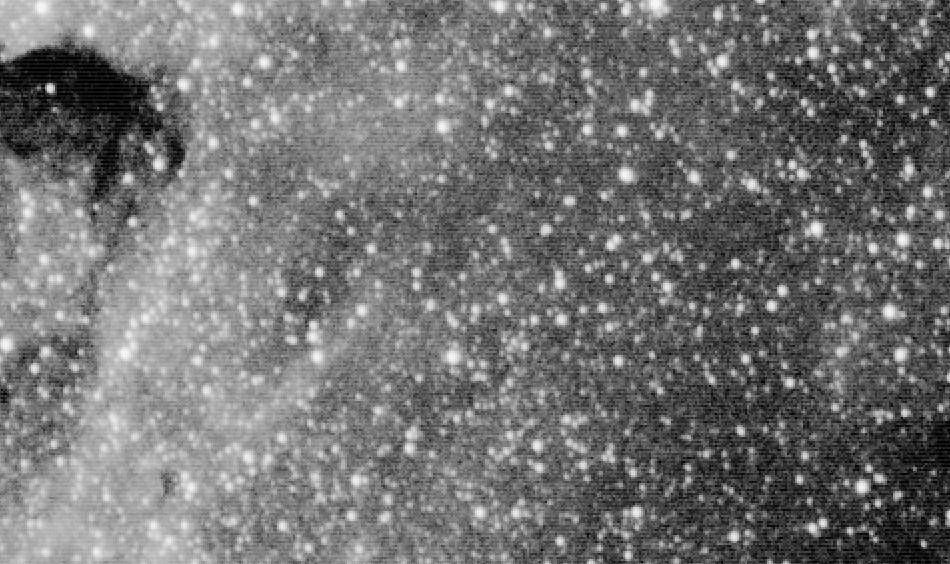- Interface
- Zooming, panning and scaling
Zooming, panning and scaling

Even the way StarTools displays and scales images, has been created specifically for astrophotography.
StarTools implements a custom scaling algorithm in its user interface, which makes sure that perceived noise levels stay constant, no matter the zoom level. This way, nasty noise surprises when viewing the image at 100% are avoided.
StarTools implements a custom scaling algorithm in its user interface, which makes sure that perceived noise levels stay constant, no matter the zoom level.
Even more clever, StarTools scaling algorithm can highlight latent and faint patterns (often indicating stacking problems or acquisition errors) by intentionally causing an aliasing pattern at different zoom levels in the presence of such patterns.

You may also be interested in...
- L. B., United States (under Testimonials)
I'm relatively new to image processing and just wanted to say how straight forward and powerful StarTools is.
- Color retention (under Usage)
The two aspects - colour and luminance - of your image are neatly separated thanks to StarTools' signal evolution Tracking engine.
- Step 2: Inspect your dataset (under Quick Start)
At this point, things to look out for are; Stacking artefacts close to the borders of the image.
- Step 8 (under Quick Start)
- Step 3 (under Quick Start)
Bin the image up until each pixel describes one unit of real detail.
